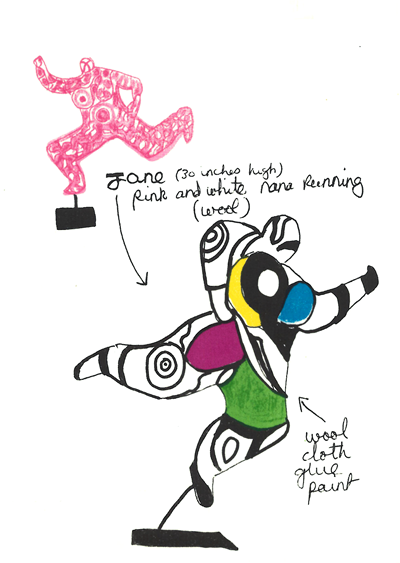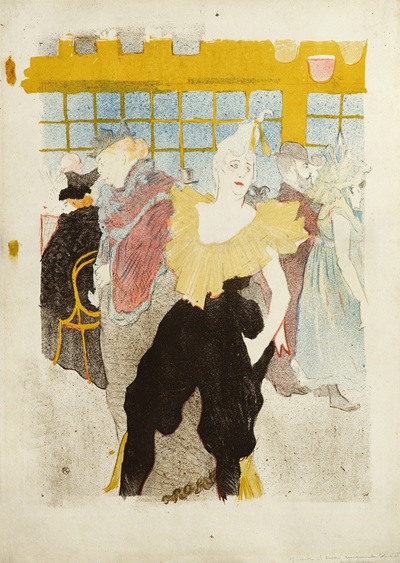
The group exhibition entitled Οἴκαδε. The Return Journey invites viewers to explore the concept of returning to the familiar space of belonging. Through a wide range of visual media and approaches, five renowned contemporary Greek artists, Angelos Antonopoulos, Spyros Verykios, Panagiotis Lambrinidis, Michalis Manousakis and Kostas Papanikolaou, attempt a journey of reflection, that transcends the narrow spatial perception of domestic space, and invites viewers to a deeper understanding of what it means to experience a familiar place, emotionally, spiritually and imaginatively. The exploration of the concept of home is attempted through a multi-layered highlighting of the psychosocial representations of dwelling, the emotional dimension of the bond with familiar space and its cultural value in shaping personal identity.
The ancient greek term”οίκαδε” means ” towards the house “, a phrase denoting the return to home, the homeland, perhaps to a familiar place after a long absence. In ancient Greek literature, the archetypal notion of the nostos, the return home, transcends the adventurous narrative, where the hero wanders the land and sea to return home. The Odyssey, as a fundamental model of the nostos, describes wandering and returning home, which semantically extends beyond the arrival at a familiar place and involves complex existential symbolism. In the Homeric epic, the notion of the nostos of returning home, to Ithaca, is stated as both a geographical place and an inner homeland, and inevitably prompts us to reflect on the role of home, the experience and memory of the place one belongs to, and shapes one’s identity, and how it has mutated in our time.

Angelos Antonopoulos, Under the Parthenon, 60 Χ 60 Χ11 cm
As in recent years, the issue of housing has gained a dominant importance on a global scale, numerous art exhibitions explore the complex web of political and social correlations that govern the concept of domestic space. The form of housing in a rapidly globalizing world, the fragile balance between privacy and public life, the constant redefinition of individual and social identity, and the redefinition of the concept of family are just some of the key social issues highlighted in the contemporary artistic landscape.
A first interpretation of the domestic space, inevitably includes in the built space, the architectural construction, which offers shelter from environmental conditions and at the same time reveals the social conditions, the aesthetic trends, the technological innovations that created it and serve the needs of self-definition and social projection of its inhabitants. At the same time, we understand private space as a concept that expresses man’s existential need for protection and security, as it offers refuge from the formative control of the public social sphere.

Kostas Papanikolaou, The Balcony, Egg & powders on wood, 60 x 120 cm
Approaching the house as a broader conceptual entity, which transcends the physical substance of the habitation or the architectural form and becomes a repository of memories, emotions and experiences that constitute the foundation of our identity, the philosopher Gaston Baschelard proposes the interpretation of the house as a repository of the immaterial, which protects and allows for peaceful reverie, transforming the domestic space into a refuge of imagination and emotion. In other words, the home is transformed into a place where every room every corner is an intimate space, hiding our fears, secrets, hopes and memories. Bachelard’s concept of “love of place” underlines the emotional attachment to familiar space and the security it provides, especially in a world that is fluid, a world that is constantly changing around us. Rooted in the intimacy of the primordial home, the space of the home acts as a source of comfort and stability, prompting us again and again to return to our roots in search of lost intimacy. The concept of home, and the concept of dwelling in general, is not just a functional activity, but a deeply personal and psychosocial process that shapes our understanding of ourselves and the world around us.
Everyone hides an Ulysses in himself, travelling through time, and longing for his return to Ithaca. The separation from a beloved place or a familiar situation of great emotional value, whether it is our childhood home or the “significant others” of our lives, as well as the desire to return to our “familiar places” are deeply imprinted in us. This nostalgia is not just a desire to return to the familiar, but a deep need to revive a part of ourselves left behind in the past.

Panagiotis Lamprinidis, Untitled, Painted metal 30 x 30 x 32 cm
Throughout time, the return to familiar places has dominated world literature as a distinct aspect of the human condition, a common thread that is revisited and interpreted by different cultures and eras. The journey back, whether to a place, such as the family home, or to an idyllic situation, such as the Garden of Eden, symbolizes a deeper search for fulfillment and completeness. It represents the desire to return to the beginning, with the hidden hope of regaining lost innocence, the archetypal “Self” or simply the sense of security that familiar places metaphorically embody. The return home, not limited to the familiar place, is above all an existential journey into memories and emotions, linked to fragments of experiences through which we rediscover the foundations of our memory and identity.
Inevitably, the journey back is charged with the paradox of searching for a place or a situation that no longer exists, with the certainty of disappointment, carried by the refutation of cherished memories, of the idealized past, which have been faithful companions on the journey back. And when the mythical Ithaca is lost, as a destination and a place of memory, the journey of return is transmuted from the need to recover what is lost forever, to a deeper understanding of the self and the world.

Michalis Manousakis, Each One, Acrylic and charcoal on wood, 54 x 49 cm
The Artists
Angelos Antonopoulos deals with issues of identity and cultural continuity mainly through his work on the concept of merging and redefining traditional symbols with contemporary means. Through questioning and reinterpretation, he does not preserve traditional symbols, but promotes a timely dialogue between the old and the new. The artist’s hybrid symbols underscore the importance of connecting the past to the present with his works serving as poignant reminders of the critical role art plays in examining the reassessment of familiar symbols in a contemporary context, while highlighting the fluid nature of cultural identity. His deeply critical approach to his work challenges the viewer to interact with the artwork to explore personal experiences and to reflect on notions of cultural identity and continuity.
Kostas Papanikolaou paints “Greece as home, and home as Greece”. In his work he weaves masterful themes of everyday life on carpets of urban landscapes. The artist delves into the domestic sphere, capturing the emotions and experiences of his protagonists, while at the same time capturing the home as a rich, lived experience. He captures personal moments of ordinary people, simple gestures, everyday incidents, fragments of familiar experiences. By focusing on the familiar, the known, the humble, it reveals the poetry of reality that we have forgotten, while encouraging a deeper appreciation of the aesthetic and emotional complexity that defines everyday life. His work’s deep connection to the traditions of Greek painting and his use of Greek light act as a bridge, connecting the historical practices of art to contemporary reality.
Michalis Manousakis incorporates in his works the motif of the house in a highly symbolic way as a complex emblem of human experience, which encompasses within its boundaries issues of isolation, memory and existential introspection. Through a peculiar expressive idiom of realism and abstraction, the artist’s metaphysical places simultaneously suggest feelings of intimacy and alienation. The intensely existential character of his work invites the viewer on an inner journey into the innocence(?) of childhood. By altering architectural forms and adopting alien landscapes, the artist expresses the emotional and psychological tension that lurks in the intimate space of the home. The notions of family, human relationships, security and vulnerability, the boundary between private and public life highlight the domestic space as a refuge and a place of exposure, a metaphor for the self, embodying the multiple and sometimes ambiguous levels of identity.
Spyros Verykios transforms the familiar space of the home into a secret, dreamlike place, which unfolds in the viewer’s subconscious. Scenes that evoke feelings of introspection and nostalgia bridge in a poetic way the tangible world with the world of human experience. From the interiors of houses to cityscapes pulsating with energy and narrative density, the artist’s images tell stories that touch the viewers’ personal experiences. Through a peculiar expressive idiom of realism and fantasy, he poetically transforms familiar images of everyday space while deftly merging the real and the imaginary, creating representations that challenge conventional notions of reality. The city, a recurring theme in the artist’s work, is depicted as a living entity, imbued with stories, dreams and memories. His atmospheric and intricately detailed depictions of cityscapes capture the energy of metropolitan life, while also conveying feelings of isolation and loneliness.
Panagiotis Lambrinidis often explores the psychological and existential depths of the human experience, using the human body as a means to express the concepts of connection and separation. Through his contemplative choice of material, the artist masterfully captures human vulnerability and resilience. This poetic essence is discernible in the way the artist’s sculptures float through time with their harmonious gestures echoing archetypal feelings of despair, ecstasy or silent contemplation. Creating connections that transcend geographical and cultural boundaries, the artist invites the viewer to probe the depths of human consciousness and the bonds that develop in enigmatic places. His sculptures push us to confront fundamental questions about existence, kinship, intimacy and alienation.
The exhibition, curated by Anastasia Balaska, art historian and museologist, will be presented at the Estudio Gallery (from 18 May to 8 June.)
More Information
- Inauguration: Saturday 18 May, at 18.00
- Duration: 18 May 2024 through 8 June 2024
- Opening Days/ Hours: Monday, Wednesday, Saturday 10.00 – 18.00Tuesday, Thusday, Friday 10.00 – 21.00
- Venue: Estudio Gallery
- Address: Kyriazi 9, 14562 Kiffisia, Attica
- Tel: 210 8086611








Leave A Comment